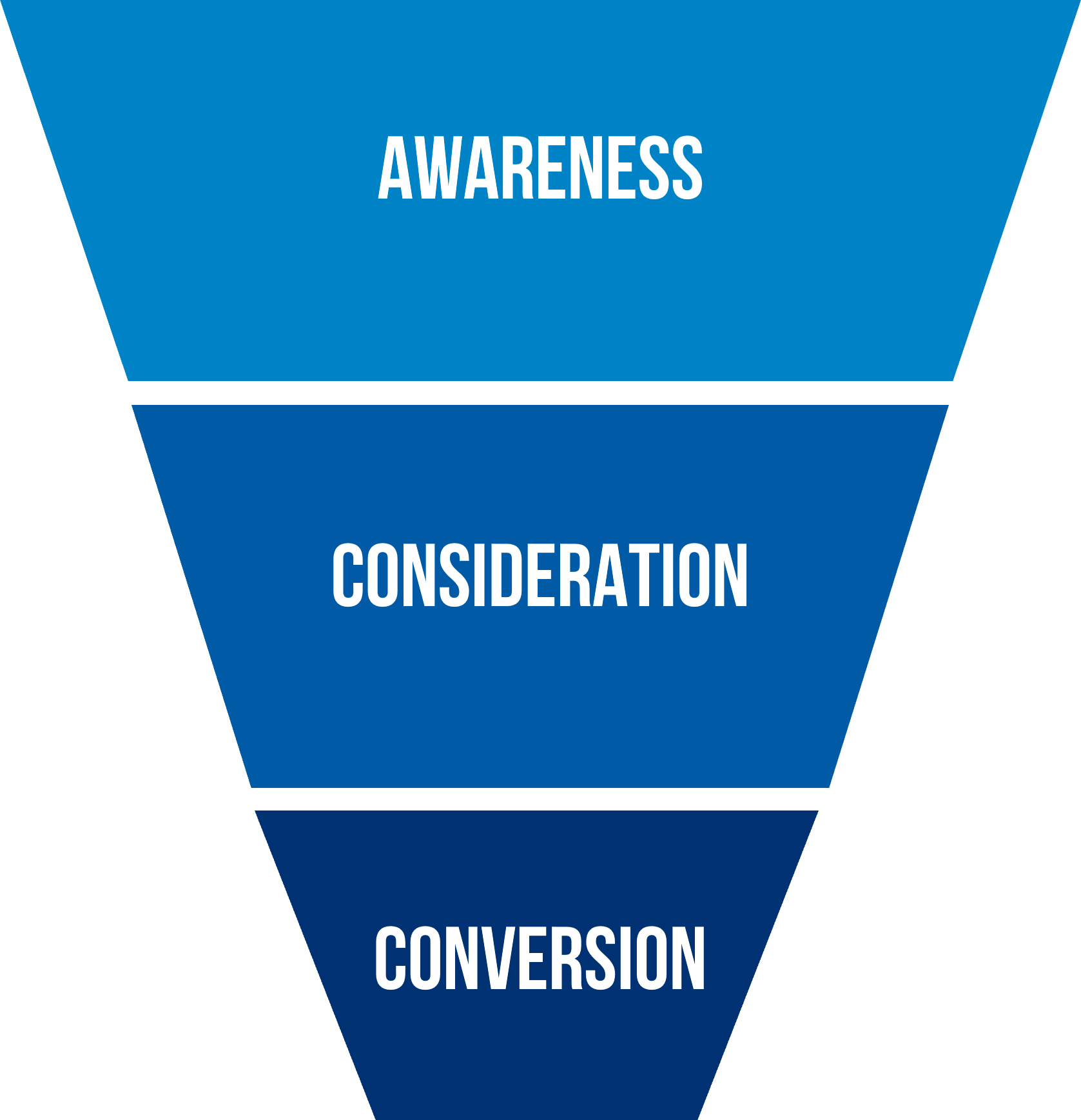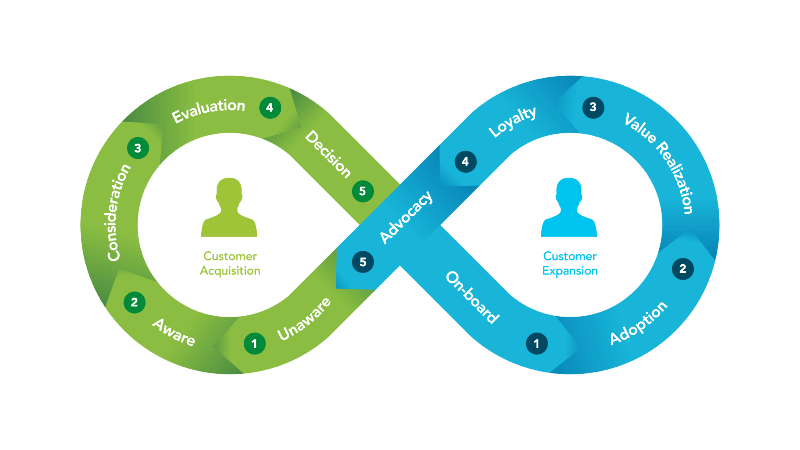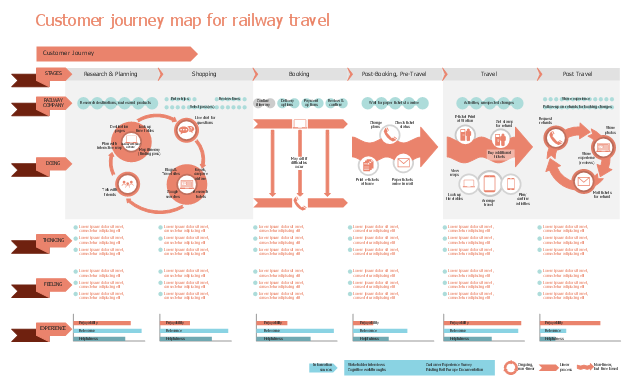Maps have long been a part of human life. They pass on knowledge. They reduce complexity.
The best maps are designed with a specific purpose, describing a territory in a useful way. Take the London Underground map. It’s useful for travelers, but tube drivers don’t use it.1
Maps help us understand and relate to the world around us. They help us predict and forecast. But no map is meant to life forever, they must be updated as the reality they depict changes.
Where existing customer journey maps and models let us down
An effective customer journey map should describe the customer journey in a useful way, it should reduce complexity, and it should be accurate.
First published in 1924, the marketing funnel is the most common map/model. The terminology varies, but labels like awareness, consideration, and conversion are popular.

Despite its widespread adoption, this model isn’t useful or accurate:
- Awareness is too vague. Awareness of a brand, by itself, isn’t enough. Relevant awareness tied to buying situations is what’s needed.2
- Consideration isn’t an accurate descriptor. Consideration assumes brands must persuade people to get them to analyze and consider a product. It ignores the role of emotion.
- Conversion lacks accuracy. Conversion rates rarely exceed 1%. Ignoring the affect ads have on the 99% that don’t convert. Describing any advertising as “conversion” focused, is flawed.3
Next, the infinite loop. More dynamic than the funnel, it captures that a journey never really ends.

The flaw? Its linear limitations prevent it from describing an important part of the journey. People will move backwards and forwards. There isn’t just one direction of travel.4
Finally, service blueprints. These get specific about touchpoints, messaging, user goals, and more.

Service blueprints provide a more holistic view and help brands deliver better creative and experiences, but there are limitations.
By only focusing on those in market, it ignores mental availability. This limits growth. Professor Jenni Romaniuk shares a great analogy on this: “A lot of advertising is geared to persuasion rather than building mental availability. Persuasion is about assuming you’re in the room and you’re arguing your point, whereas mental availability is about getting into the room. And so that’s the big challenge: most organizations are failing to get into the room, but they’re spending all their money on arguing as if they’re already there.”5
Service blueprints improve accuracy but increase the danger of missing changes. Brands using service blueprints need to allocate always-on resources and budget to keep the map updated.
No map is perfect. Reductions of the reality they represent, there will always be details excluded. Ignoring those limitations is not the route to effective marketing.
References
1 - Inspired by Shane Parrish’s Great Mental Models Volume 1. Shane is based in Ottawa and previously worked in the Canadian security services.
3 – Marketing Week: Why the sales funnel is the cockroach of marketing concepts
4 – The EQ Planner: A Quick History of The Path to Purchase/Consumer Pathway


